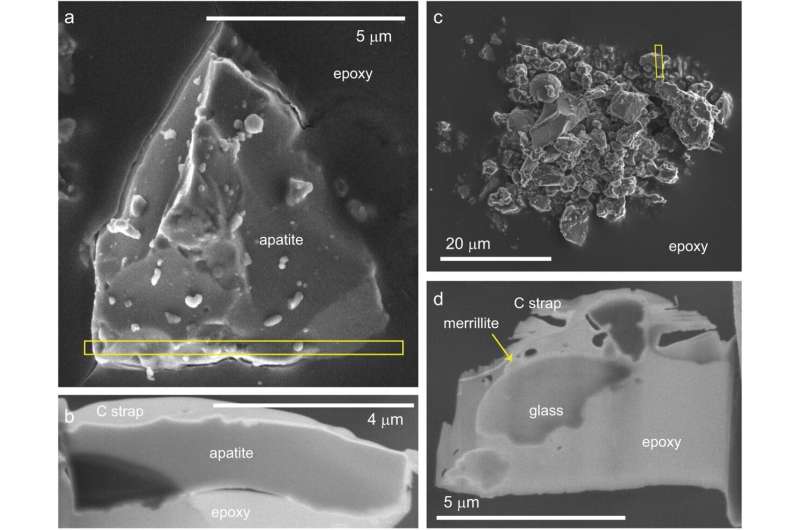U.S. Naval Research Laboratory (NRL) researchers have discovered solar-wind hydrogen in lunar samples, which indicates that water on the surface of the moon may provide a vital resource for future lunar bases and longer-range space exploration. Space-based resource identification is a key factor in planning for civilian- and government-led space exploration.
"Hydrogen has the potential to be a resource that can be used directly on the lunar surface when there are more regular or permanent installations there," said Dr. Katherine D. Burgess, geologist in NRL's Materials Science and Technology Division. "Locating resources and understanding how to collect them prior to getting to the moon is going to be incredibly valuable for space exploration."
The Apollo lunar soil samples were provided by a NASA research mission to NRL scientists for investigation and testing. The research team, led by scientists in NRL's Materials Science and Technology Division, continues to study lunar surface and asteroidal samples to gain an understanding of how surfaces interact with the space environment, which is known as space weathering. Previous testing from additional Apollo samples confirmed the location of solar wind helium in lunar soil grains.
"This is the first time scientists have demonstrated the detection of hydrogen-bearing species within vesicles in lunar samples," said Dr. Burgess. "Previously, the same team at NRL used state-of-the-art techniques such as scanning transmission electron microscopy and electron energy loss spectroscopy to detect helium in lunar samples, and other researchers have found water in other planetary samples, but this is the first publication to show hydrogen in-situ in lunar samples."
The research is published in the Communications Earth & Environment journal.
More information: Katherine D. Burgess et al, Hydrogen-bearing vesicles in space weathered lunar calcium-phosphates, Communications Earth & Environment (2023). DOI: 10.1038/s43247-023-01060-5
Journal information:Communications Earth & Environment
Provided by Naval Research Laboratory



